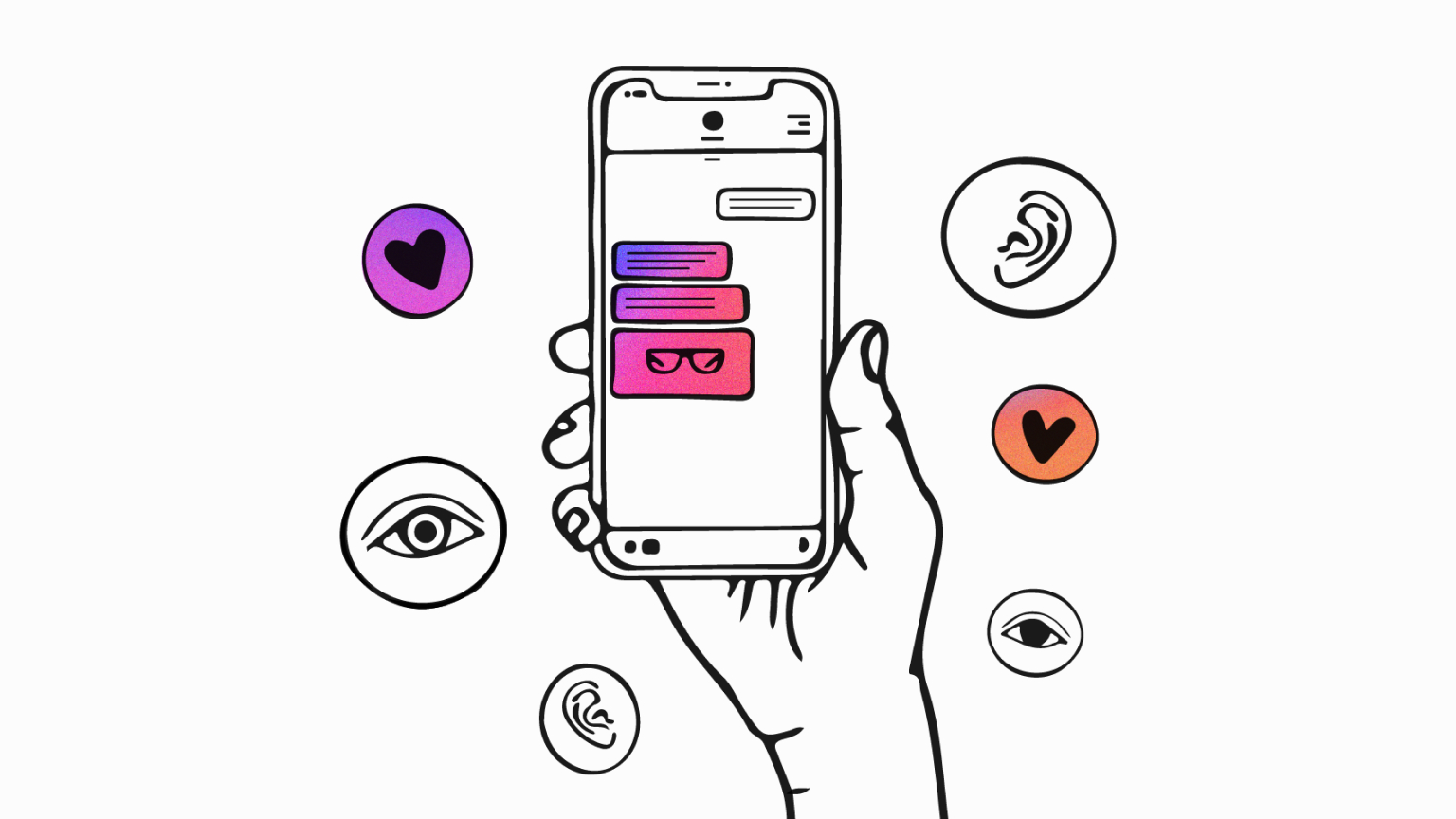article
Not every customer service chatbot is created equal
There are good and bad AI chatbots, and your customers will notice the difference
April 12, 2022 • 7 minutes

It wasn’t until Sunday afternoon on January 2 that I realized I’d lost my wallet that previous Thursday, someplace between Midtown Manhattan and my home in Brooklyn. Yes, that Midtown, where folks from all over the world convene to ring in a new year, packed like sardines on the busiest streets in one of the most visited cities. Days—DAYS!—had passed before I realized that all of my credit cards, my NY driver’s license, even a newly loaded Metrocard were gone and no longer safe. The sheer horror I felt in that moment nearly flatlined me. The blood from my head to my fingertips ran cold as I went to grab my belongings to run some errands and discovered them missing. Was all of my money gone too?
This loss led me through two very different customer interactions, helping illustrate the importance of AI-powered customer service that is actually helpful.
The customer service chatbot fail
The instant support I needed most as a customer at that moment, proved impossible to get. This is one of the largest national banks, headquartered right here in NYC. How—why— in 2022, are they this inaccessible?
With sweaty, shaky hands I immediately grabbed my iPhone and logged into my bank’s app to see my checking and savings accounts. Phew, money was all there, miraculously. I then found the tab to report my debit card missing. But that tab only led me to a 1-888 number to call. Why does a useless tab exist, and one that would be crucial to customer service processes? Nonetheless, I called the number. Whatever I needed to do to make it impossible for anyone to use my missing debit card, I would do.
The call took me through various automated steps before I started repeating, “Agent!,” out of growing desperation. I was nowhere near speaking with a human agent when the call suddenly dropped. Great, it’s Sunday, which means bank branches are closed, so no customer support access there, either. Back to square one. Sure, my money was still right where it was supposed to be, but for how long? I went back to the banking app to look for more immediate solutions.
I chose the option to chat. I work for a Conversational AI company, so I know the purpose of customer service chatbots today. It’s in these specific moments for customers, when they are panicking and need immediate solutions and a human agent isn’t available to talk, that quality chatbots were built for. Since this was a major bank I’d been a customer of for decades, surely they will have a quality customer service bot that I will find most helpful. Nope, sadly, I hit another dead end.
In the chat conversation window I typed, “Lost debit card. Please replace it.” The chatbot replied, “It sounds like you need help replacing your debit card. Please follow the instructions in the ‘Replace My Debit Card’ tab, or call us at 1-888.” I’d already discovered that neither of those options provided any solutions of course, so I typed that in and got the very same response back.
Before I ended the chat and threw my phone at the wall, I typed, “YOU NEED LIVEPERSON’S HELP!”
Robotic, cold, unhelpful messaging. How was this possible from a major financial institution in 2022? I put down my smartphone and opened my computer. Perhaps in desktop view, I’ll find that logging into my account will be more beneficial. Wrong. Yet another dead end. In desktop mode, I couldn’t even find a way to email the support team at this big bank, let alone simply cancel my debit card. The only action I was able to take was to move my money from checking to savings to safeguard it that way. Even though a credit card thief could potentially still hack into my savings account with the lost card I couldn’t seem to cancel.
The cost of a poor customer experience
I had to go back into my personal inbox to find an old promotional email and reply to it, begging anyone to hear me out, with no guarantee it would warrant a solution. Deflated, immensely frustrated, and angry, I closed my laptop, picked up my smartphone, and Tweeted the bank’s customer service handle. It should come as absolutely no surprise that that action reaped zero results. Never in my life had I wanted to fill out a customer satisfaction survey so badly.
In that moment, it felt so dystopian. This bank holds all of my money, yet I can’t reach support agents on a Sunday in an emergency. Was I not a big enough client? Did they not care about me, or their regular customers? With all of the revolutionary artificial intelligence technology to support customer service tools today, did they say, “Nah, we’re good — we’re not into the idea of creating better customer experiences?”
I’d been considering using this bank to seek my first ever home loan, but no longer. If I can’t find digital access to cancel a single debit card, there’s no way I’m risking the same with a mortgage. So much for customer loyalty. In this instance, we both lose.
The customer service chatbot win
Thankfully, another company offered a wonderful customer experience, entirely through high-quality customer service chatbots.
There was nothing more I could do with the bank on that Sunday night. Any further actions to register my lost debit card and get a new one would have to wait until Monday, when a nearby branch was open for in-person business. I pivoted to locating my lost wallet.
I’d gone to lunch in Midtown that Thursday afternoon and knew I’d left the restaurant with all of my belongings. I was sure the wallet must have fallen out in the car I’d taken back to Brooklyn. I picked up my phone again and went to the rideshare app I’d used. Since it had been more than 48 hours, I could no longer message the driver, just a customer service team channel. I typed in all of the specifics: the date and time of my ride, the driver’s name (all there to see in the Ride History tab on the app), and what I’d lost. Within five minutes, I’d gotten a reply.
In this customer engagement channel, the chatbot confirmed the details I’d given them. Five minutes later, the chatbot also confirmed the driver had returned my wallet to the old address listed on my driver’s license. I squealed with delight and relief. I could easily contact that new, nearby tenant, no problem. I proceeded to ask the chatbot if I could tip the driver an additional fee, and how to confirm the tip would go to him directly. I soon got a reply with exactly how to do that, along with the specifics of when I’d receive that payment confirmation. I thanked this wonderful customer service chatbot for its help before it asked if I needed anything else. Easy, quick, helpful, resolute.
Two chatbots for two major US brands — two very different customer experiences
I’m a consumer who just so happens to work for a Conversational AI company. LivePerson has made me more aware of how we communicate with brands and businesses, and how those digital experiences can impact our daily lives. It is inexcusable to me that a major North American bank still offers the worst digital customer service experience imaginable in 2022. On the flip side, it’s reassuring that a major American rideshare company offers an exquisite customer journey and consistent support.
As direct customers, we give our hard-earned money to these companies in order to feel seen, heard, protected, and respected. When brands fail to provide us those assurances, we can decide to take our money elsewhere. Which is exactly what I will do.
I find no joy in going through the motions of finding a new bank after decades with the one that let me down when I needed them most. However, I find it more painful to have to go through something like this ever again. In the meantime, I’ll happily continue using the rideshare which provided a meaningful, seamless experience with a customer support chatbot.

